Painting Matt Over Silk Paint: Expert Advice From DIY DOJO
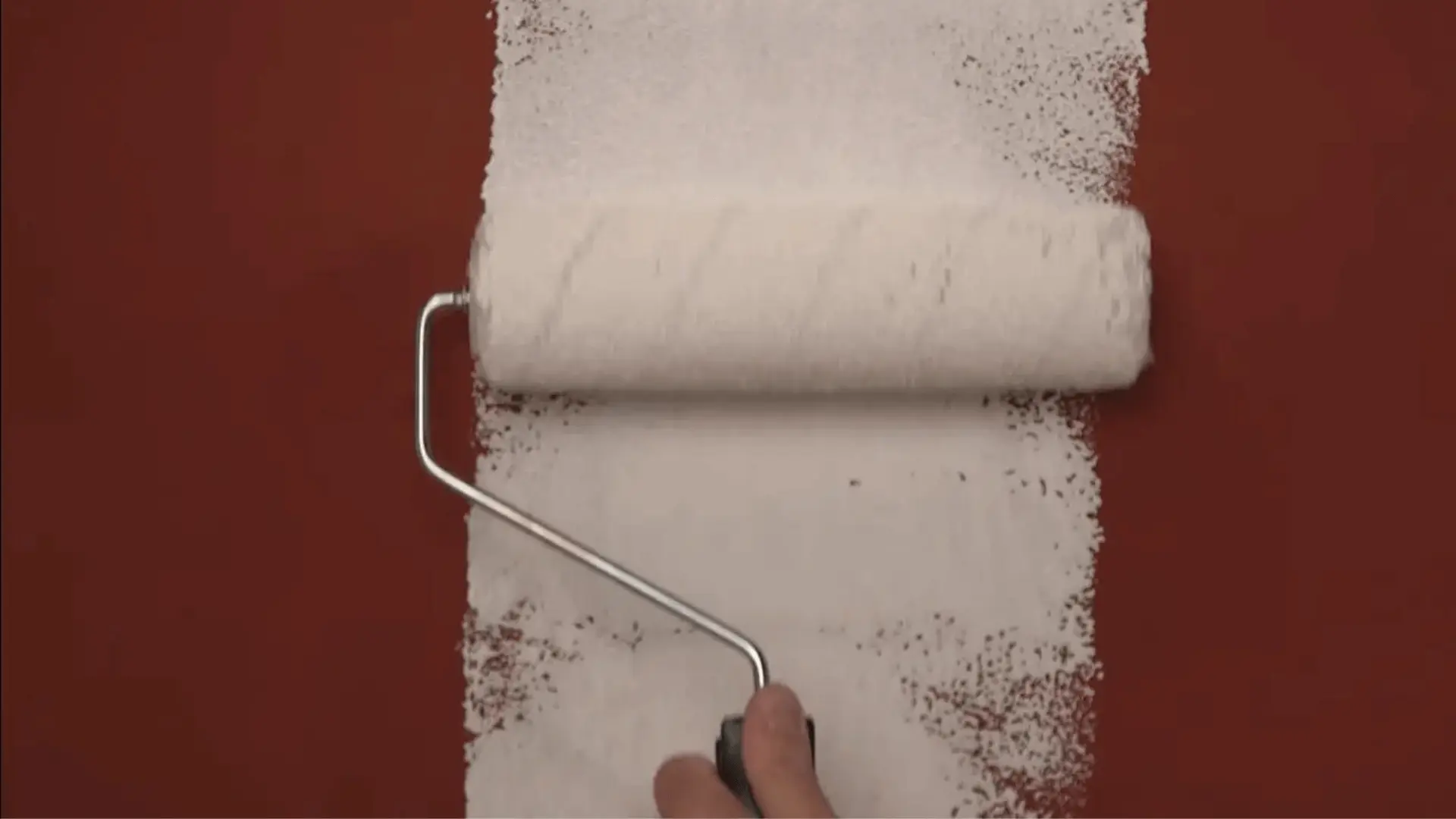
DIY DOJO is reader-supported. We may earn an affiliate commission when you buy through links on our site. Find out more.
Painting over an old silk painted wall can be challenging, especially if you want to change the sheen level or color. It’s no surprise that many people ask the question, “can you paint matt over silk paint?” The answer is yes, but it’s not as simple as slapping on a new coat of paint.
In this article, we’ll explore the differences between matt and silk paints, discuss the feasibility of painting matt over silk, and provide tips for achieving a professional-looking finish.
What Is The Difference Between Matt & Silk Paint?
The difference between matt & silk paint is that Silk paint has a mid-sheen level that provides a soft, lustrous finish. It’s perfect for rooms that require a touch of sophistication, such as living rooms or bedrooms. There are different types of silk paint, including emulsion and vinyl silk. Emulsion silk paint is water-based, making it easier to clean and ideal for kitchens and bathrooms. Vinyl silk is oil-based and provides a more durable finish, making it suitable for high-traffic areas like hallways.
On the other hand, matt paint has a low sheen level, which provides a flat, non-reflective finish. It’s perfect for hiding imperfections on walls and ceilings and is ideal for low-traffic areas such as bedrooms. Like silk paint, there are different types of matt paint, including emulsion and vinyl matt. Emulsion matt paint is water-based and easy to clean, while vinyl matt is oil-based and is more durable.
Before you start painting matt over silk paint, it’s important to ensure a smooth surface, and our Ultimate Guide On How To Remove Wallpaper Without Damaging Your Walls can help you achieve just that.
Can You Paint Matt Over Silk?
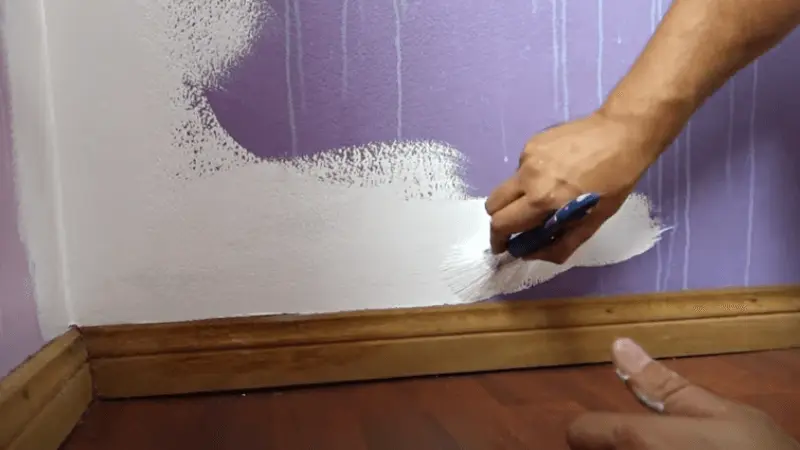
The answer is yes; you can paint matt over silk. However, you need to take a few steps before applying the new coat of paint. First, sand the walls or ceiling with sandpaper to remove the gloss from the silk painting.
After that, you must prime the surface with a coat of Zinsser, a specialist primer that can adhere to glossy surfaces. After the primer has fully dried, you may proceed to apply the matte paint.When painting matt over silk, you must use water-based paint because oil-based paints can cause cracking and crazing.
The drying time for matt paint is longer than silk paint, so you must wait until the first coat is dry before applying the second coat. Applying two coats of matt paint will give the silk paint a flat finish.
How to Paint Over Silk Painted Walls
When painting over silk painted walls, there are a few steps to ensure the best results. First, you must prepare the surface by cleaning the walls with warm water and a sponge. This will remove any dirt, grime, or other debris that may interfere with the new layer of paint.
Next, you need to sand the surface lightly with fine-grit sandpaper to remove the gloss and create a rough surface to the new paint to adhere to. After sanding, dust and debris must be removed with a damp cloth or vacuum cleaner.
Now, it’s time to prime the surface with a suitable primer. You can use a water-based primer or a Zinsser primer specifically designed for painting over silk painted walls. Apply a coat of Zinsser Gardz to seal the surface and prevent cracking and crazing.
After the primer has dried, it is time to put on the new coat of paint. For the first coat, use a matt emulsion. This will help hide imperfections and give the silk paint an excellent base to adhere to. Let the first coat of matt paint dry completely before applying the next coat.
After the first coat of matt paint has dried, it’s time to apply the silk painting. Use a roller or brush to apply the silk paint straight to the dried matt layer. Let the silk paint dry completely before applying a second coat if needed.
What Is the Difference Between Dulux Matt and Silk?
Dulux is a popular paint brand offering both matt and silk paints. The main difference between the two is the level of sheen and finish.
Dulux matt paint provides a flat, non-reflective finish for low-traffic areas such as living rooms and bedrooms. It is also a great choice for imperfect walls and ceilings, as it helps hide them.
On the other hand, Dulux silk paint has a mid-sheen finish that provides a subtle shine. It is more durable than matt paint and is suitable for areas prone to wear and tears, such as kitchens and bathrooms.
Tips for a Professional-Looking Finish
If you want to achieve a professional-looking finish when painting over silk, here are a few tips to keep in mind:
Sand the walls:
Before painting, you must sand the walls to remove the sheen from the silk painting. Use sandpaper with a grit of 120 or higher to sand the walls. Be careful not to sand too hard, which can damage the walls.
Prime the walls:
Once you have sanded the walls, you need to prime them. Use a high-quality primer, such as Zinsser Bullseye 1-2-3 or Zinsser Gardz. Apply the primer with a brush or roller, and allow it to dry completely.
Apply the first coat of paint:
Once the primer has fully dried, you may proceed to apply the first layer of paint. Use a high-quality, water-based matt emulsion paint, and apply it with a brush or roller. Be sure to apply the paint evenly and cover the entire wall.
Let the first coat dry:
Allow the first coat of paint to dry completely before applying the next coat. By doing this, you can ensure that the paint sticks to the wall as it should.
Apply the second coat of paint:
Once the first coat has dried, you can apply the second coat of paint. This will help to even out the color and provide better coverage. Be sure to apply the paint evenly and cover the entire wall.
Avoid sanding between coats:
You should avoid sanding between coats, as this can damage the wall and cause the paint to peel.
Let the final coat dry:
Once you have applied the final coat of paint, allow it to dry completely. This will ensure that the paint has cured properly and will provide a durable finish.
Inspect for imperfections:
Once the final coat of paint has fully dried, inspect the walls for imperfections. If you notice any areas that need to be touched up, use a small brush to paint over them.
Clean up:
After you have finished painting, be sure to clean up your brushes and rollers with water. You should also clean up any drips or spills on the floor or furniture.
If you’re considering repainting a room and want to choose the perfect color, “How To Choose Paint Colours: 6 Pro-Tips And Mistakes To Avoid” offers expert advice on selecting colors that will complement your space.
Conclusion
In conclusion, painting matt over silk is possible but requires proper preparation and application to achieve a professional-looking finish. It’s important to understand the difference between matt and silk paints and choose the right type of paint for your project.
When painting over silk painted walls, it’s essential to sand and prime the surface before applying the new paint. Using a suitable primer and applying the paint correctly will help prevent cracking and crazing.
Overall, painting matt over silk can be a great way to update your walls and give them a new look. Follow the steps and tips this article outlines to achieve the best results.
If you’ve had trouble with yellowing gloss paint, check out our expert tips for preventing this common problem.
FAQs
If you’re working with MDF, you may want to read our essential advice for painting it with emulsion to achieve a smooth and even finish.

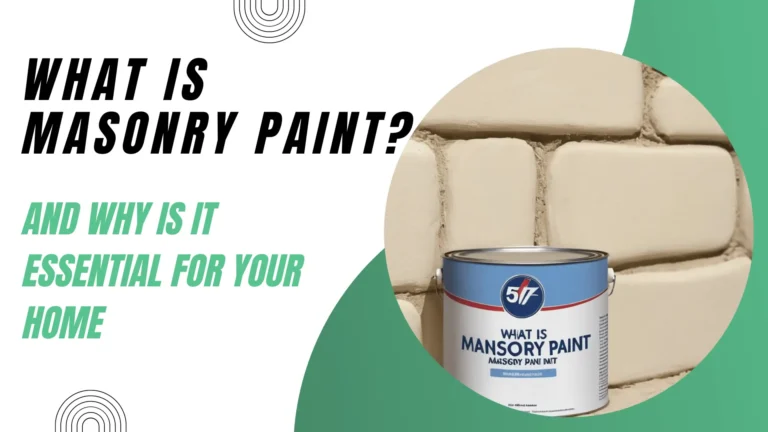
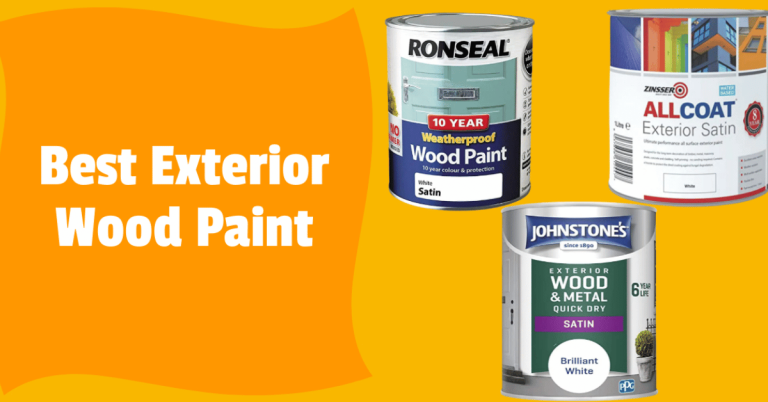


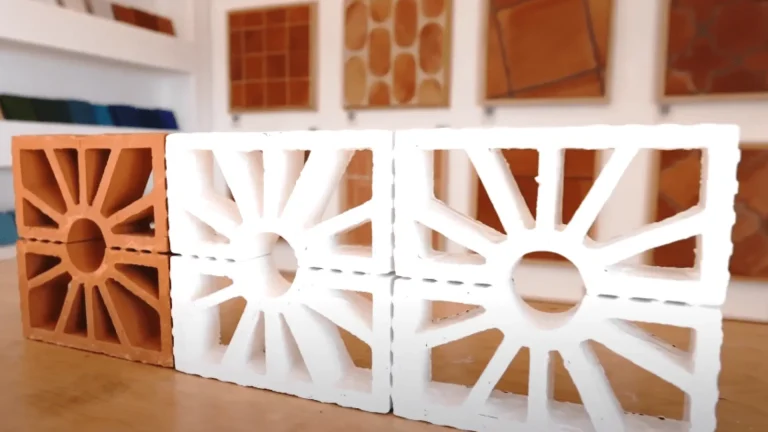
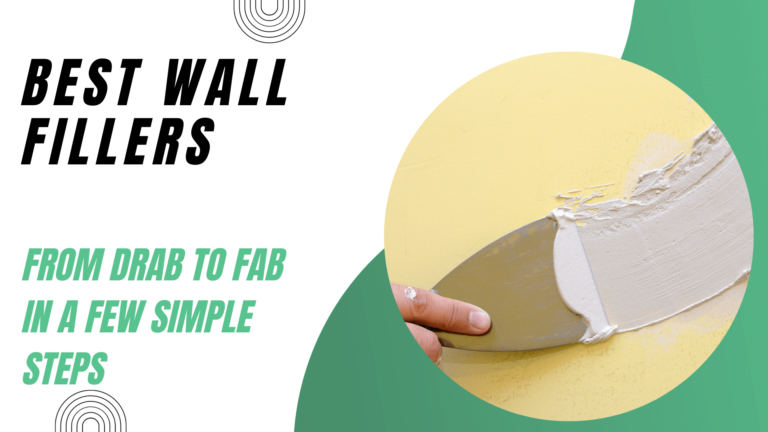
Search
aijdohmdfgs
[url=http://www.g0j94cbb34uy7x9jw6ag511fzw3354p4s.org/]uijdohmdfgs[/url]
ijdohmdfgs http://www.g0j94cbb34uy7x9jw6ag511fzw3354p4s.org/
2.4T Manual Gasoline Pickup 2WD 5 Seats
Mixer Grinder
2.4T Manual Diesel Pickup 2WD
Flash Dryer For Screen Printing
2.4T Automatic Gasoline Pickup 4WD 5 Seats
Liquid Dryer
drum.arsnova.com.ua
Spray Drying Process
Vacuum Shelf Dryer
Electric Pickup 2WD
2.4T Manual Gasoline Pickup 4WD 5 Seats
DIN 1530 Ejector Pins Type A
http://www.quawas.jo
Standard DIN 9845 Dies Type B
Standard Bush DIN172A
Nitrogen Membrane Separator
Customized CNC Machining Parts
Hydrogen Gas Energy
Vpsa Oxygen Generator
Dispersion Oxygen Generator
Standard Bush DIN179A
Krypton & Xenon Recovery Equipment
http://www.antheminfotech.com
Graphite Sheet Market Share
FeSO4.183;7H2O Cas No. 7782-63-0
Natural Graphite Industry
Flexible Graphite Ribbon
Flexible Graphite Sheet
Ferrous Sulfate
Ferrous Sulfate Heptahydrate Cas No. 7782-63-0
Natural Graphite Sheet
FeSO4.183;7H2O
Green Vitriol Cas No. 7782-63-0
12W Constant Current DALI CCT Dimmable LED Driver
30W Constant Current DALI CCT Dimmable LED Driver
20W Constant Current DALI CCT Dimmable LED Driver
Car Air Conditioning Cleaner
40W Constant Current DALI CCT Dimmable LED Driver
150W Constant Voltage DALI Dimmable LED Driver
Car Dashboard Cleaning Gel
Car Drying Chamois
jisnas.com
Mobile Detailing Supplies
Car Tyre Cleaner
Anti-Thorn Cloth Roll Anti-Tear Throw Tree Protection Net
HDPE UV Treated Olive Harvest Net
UV Plastic Mesh Mature Treated Olive Harvest Cover Net
Harvest Olive Netting HDPE Knitted Green Olive Net
Filter Mesh Cap Wire Mesh Filter Cap,
Non-standard agricultural bearings
Ucp212-38
Glue For Truck Filter,
Ucp208-24 Bearing
http://www.agnoli-giuggioli.it
Agriculture HDPE Olive Net for Olive Collection
11kv To 440v 600 630 Kva Distribution Transformer
Teen Patti Master Download
Win Real Money Games
300 kva 3 phase step up transformer 315 kva
33 415 Kv 1250 Kva Distribution Transformer
http://www.modan1.app
500kva 33 0.415 Kv Distribution Transformer
The Techno Tricks App
Super Rummy Apk
11kv 3 Phase 200kva Distribution Transformer
Win Bet Rummy Apk
Hydrocarbon Resin For Rubber,Color Asphalt,Waterproof Roll
Tapered Roller Bearing Machinery
Cylindrical Roller Bearings for Air Compressor
Clutch Release Bearing Truck
Metal Engraver
Copolymer Resin
Petroleum Resin
http://www.portalventas.net
Clutch Release Bearing for Scania
Clutch Release Bearing for Isuzu
Hydrocarbon Resin C9
1- ??????????????????
1,2- ??????????
Flange Steel
Flange Stainless
Forged Flange Dimensions
??????? ??? ???? 28578-16-7
http://www.mdjspb.ru
Threaded Slip On Flange
Lap Joint Flange Types
1- ????????????
????? 1451-82-7 ??????????? -4
Milliohm Resistors HMR
sporry.com
Graphite Processing
Graphite Vane
RN Precision Metal Film Resistors
Graphite
RSN Metal Oxide Film Resistors Flameproof
RSS Metal Oxide Film Resistors Flameproof Small Type
Coil resistor
Graphite Rotating Parts
Graphite Pocket
FKN-S Fusible Wire Wound Resistors
High Quality T Shirts
Metal Plate Non-inductive Cement Type Resistors
Hooded Sweatshirt
Hoodie Blanket
Metal Plate Non-inductive Cement Resistor
Hoodie Dress
Plate Cement Resistor
http://www.gesadco.pt
Wire wound Fuse Resistors
High Waisted Shorts
Button Cell
Ribbon With Logo
http://www.opaleimpressions.com
201 Stainless Steel Coil
Button Making Machines
Gold Buttons
202 Stainless Steel Coil
301 Stainless Steel Coil
Ribbon Printer
Mirror Stainless Steel Coil
Cold Rolled Stainless Steel Coils
Inductive Proximity Switch Proximity Sensor Position Sensor
Aluminum Square Tubing
Aluminum Flexible Pipe
Inductive Proximity Sensor Switch
Aluminum Tube
ketamata.xsrv.jp
M24 Inductive Proximity Switch Proximity Sensor
Detect Metal Object M24 Inductive Proximity
Long Cylinder Shape Inductive Proximity Switches
Aluminum Dryer Vent Pipe
Metal In A Tube
Mini Submersible Water Pump
Dichlorocopper Hydrate Cas No. 10125-13-0
Copper Chloride Dihydrate Cas No. 10125-13-0
Dichlorocopper Dihydrate
Submersible Water Pump For Hot Tub
Abs Submersible Pump
Copper Chloride Dihydrate Cas No. 13933-17-0
pawilony.biz.pl
Cupric Chloride
220v Submersible Water Pump
Submersible Water Pump Automatic
Graphite Sheet with Metal Mesh
Lead Screw Linear Actuator
Linear Motion Drives
Xy Linear Actuator
Linear Stage Actuator
alphacut.jp
Graphite Sheet Reinforced with Metal Foil
High Load Linear Actuator
Flexible Graphite Sheet
Non-asbestos Sheet
Graphite Sheet reinforced with Tanged Metal
Heat Resistant Nozzle Cover
Used Mini Excavator
50 Tons Used Excavator
Self Standing Bag Dust Proof Nozzle Cover
Suction Nozzle
Flexible Suction Nozzle
60 Tons Used Excavator
consultationcrackdown.top
220 Hp Used Bulldozer
20 Tons Used Excavator
Flexible Rice Bag Tote Buckle
Horizontal Double Drive V Groove Slotting Machine
Luxury Bath Caddy Tub
CNC Horizontal Double Drive V Grooving Machine For Stainless Steel Plates
http://www.sgceris.com
Kitchen Cooking Utensils Sets
Horizontal Double Drive V Cutting Machine
Horizontal Double Drive V Slotting Machine
Cooking Tools
Horizontal Double Drive V Groove Cutting Machine
Kitchen Utensils Set
Luxury Bathtub Caddy Tray
Five Layer PE Blown Film Machine
Flexible Panels
Ubox 4g Solar Camera
Five Layer PA Blown Film Machine
Super Thin Solar Panels
Five Layer EVA Blown Film Machine
Songsolar Energy
Sun Photovoltaic Systems
kmu.ac.th
Five Layer High Speed Blown Film Machine
Five Layer EVOH Blown Film Machine
Solar Mounting Clamp
Disconnecting Switch
250 Amp Disconnect
300 Amp Disconnect
Dc Air Circuit Breaker
Solar End Clamp
Non Surge Power Strip
Solar Mid Clamp
solar asphalt shingle hooks
Non-adjustable Solar Asphalt Roof Hook
3.5 Inch Sunlight Readable TFT Display 320*240 IPS 54 Pin 24 Bit RGB ST7272
Casserole Dish Set
3.95 Inch Square TFT Display 480*480 SPI RGB ST7701 50 Pin
Enamel Cast Iron Skillet
1.47 Inch Sunlight Readable TFT Display 172*320 SPI 12 Pin
Casserole Set
Cast Iron Door Mat
3.5 Inch Sunlight Readable TFT Display 320*240 IPS
3.5 Inch Custom TFT Display 480*320 Sunlight Readable with CTP
Pipes Stand
Single Phase AC Output
Dual Phase AC Output
Panel Mount SSR
Hub Bearing In Spanish
Single Phase DC Output
Abs Wheel Bearing
DC Output
Hub And Bearing Replacement
22206 Mb Car Parts Bearing
Angular Insert Thrust Pillow Block Deep Groove Ball Bearing
1390 Laser Engraving Machine
6090 Laser Engraving Machine
Root Ball Propagation
Root Propagation Ball
1325 Laser Engraving Machine
fiber laser machine
Root Growing Ball
CO2 laser machine
Grass Sod Staple Metal Garden U Pins
Weed Fabric
Pull-down Kitchen Faucets
Single Handle Bathroom Faucets
Cold Basin Faucets
Optical Lenses
Gold Bathroom Tap
57x25mm Thermal Paper Roll
Thermal Receipt Printer
Single Hole Bathroom Faucets
Adhesive tapes
Sticker Label Printing
Gold Kitchen Faucets
Floor Drain
Brushed Gold Kitchen Faucets
Car Alarm Siren
Cold Tap
Police Car Horan
Round Beacon Light
Fire Rescue Led Lightbar
Led Flashing Light Bar
Angle Valve
Ultra Soft Toothbrush
Teeth Mould Kit For Whitening
Truck Engine Air Filter Element Replacement
Truck Filter Explanation
Factory Manufactures The Filter
Teeth Whitening Kits Home Whitening System
Introduction to Air Filters
Teeth Whitening Kit
Oil Filters
Ultra Soft Toothbrush
Pure Electric Truck
Rcbo 16a 30ma
Plug In Distribution Board
New energy truck
Main Breaker Box
Dump Trucks
Trucks
Rcbo 10a
Rcbo 6a
New energy trucks
Hammer Pattern Paint
Rechargeable Cordless Lamp
Wireless Motion Sensor Light
Decorative Plant Lights
Wireless Motion Sensor Light
Women's Fashion Hoodie – Soft Casual Cotton Pullover For Everyday Wear
Custom Men's Hoodies & Sweatshirts Cotton Blend Oversized Fit
Men's Casual Hoodie With Monster Print Streetwear Collection Heavyweight
orden.coulot.info
Golden Aerosol Paint
Customized Color Aerosol Paint
Unisex Black Cloud Patterned Hoodie Streetwear And Pants Sweatshirts Suit
Colored Aerosol Auto-Spray Paint
Anime Inspired Hoodie For Men Heavyweight Streetwear Sweatshirt
Herb Garden Light
Fluorescent Paint
New energy bus
ZR Scroll Copeland Compressor
Tecumseh Refrigerator Compressor
Men White Basic T-shirt
White Logo Tee For Men Cotton Comfort Subtle Branding Essential Wardrobe Casual Or Layering High Quality
Men's Leisure Hoodie In Teal Heavyweight Cotton Comfort Fit With Front Pocket Perfect For Streetwear
orden.coulot.info
City Bus
Men's Zip Up Hoodie In Soft Beige High-quality Cotton Blend Comfort Fit Sweatshirt For Casual Style
Pure electric buses
Dc Air Conditioner Compressor
Acid Wash Men's Hoodie In Grey Oversized Street Style Cotton Sweatshirt With Distressed Finish
Copeland Scroll Compressor
City buses
New energy buses
Tecumseh Rotary Compressor
Drawer box
Sandwich Packaging Box
Thick Cotton Streetwear Essential
2.0 inch TFT LCD
1.69 inch TFT LCD
Christmas Eve Treat Box
Men's Black Hoodie With White Custom Logo Streetwear Essential
http://www.burann.com
1.54 inch TFT LCD
Charcoal Grey Men's Zip Up Hoodie Casual Custom Logo Option
1.77 inch TFT LCD
Christmas Cheese Gift Boxes
Light Blue Men's Hoodie With Custom Logo Cotton Streetwear
1.44 inch TFT LCD
Men's Dark Green Pocket Versatile And Stylish Cotton Shirt Casual Summer T-shirt With Pocket And Custom Logo
Cosmetic Packaging Box
Hot Sale Women Basic Girl Pattern Tee Shirt Casual O-neck Short Sleeve Female Cotton T- Solid Tshirt Tops
Quality Acid Wash Washed Print T Shirt Women Plus Size Vintage Streetwear Mineral T-shirts Girls Luxury Brand Tops Y2k
Hot Sale Daily Wear T-shirts For Women Lets Go Girls Vintage High Quality Oversized Cotton T Shirt
Kids Backpack
Fiber Laser Cutting Machine
Custom Women's T-shirt Long Drop-shoulder Women's T-shirt Wholesale Long-sleeved Casual Short Sleeve
http://www.eroticastore.nl
Panel Saw
insulated lunch bag
1325 Advertising Engraving Machine
Drawstring Backpack
Good Quality Women's Organic Cotton T Shirts Designer Round-neck Breathable Women's Tight T-shirt
insulated lunch bag
cute bag
Rotary Wood CNC
Side Hole Drilling Machine
Shoe Cabinet With Doors
Folding Chairs With Tables
3.5 Inch Sunlight Readable TFT Display 320*240 IPS
1.47 Inch Sunlight Readable TFT Display 172*320 SPI 12 Pin
Shoe Cabinet With Doors
Men's Zip Up Hoodie Black Soft-touch Cotton Hooded Sweatshirt Streetwear Essentials Urban Style Winter Clothing
Shoe Stand
Shoe Stand
Men's Black Hoodie With Paint Splatter Detail Edgy Streetwear Style Comfortable Cotton Casual Pullover Artisan Design
3.5 Inch Custom TFT Display 480*320 Sunlight Readable with CTP
Men's High Neck Grey Hoodie Tailored Fit Streetwear Pullover Soft Cotton Heavyweight Hoodie For Modern Urban Style
High-quality Cotton Hoodie Men's Charcoal Grey Pullover Street Style Classic Comfort Durable Heavyweight Casual Top
3.95 Inch Square TFT Display 480*480 SPI RGB ST7701 50 Pin
3.5 Inch Sunlight Readable TFT Display 320*240 IPS 54 Pin 24 Bit RGB ST7272
Men's Pullover Hoodie Cotton Soft Comfortable Tailored Fit Streetwear Essential Casual Fashion Classic Design
http://www.edzokepzo.hu
Chicken Flavor Freeze-dried Dog Food
Urban Style Men's Sweatshirt Trendy Custom Color Hooded Sweatshirt With Cuffed Sleeves Oversize Comfort
Soft Cotton Blend Men's Hoodie Pullover Hooded Sweatshirt For Everyday Wear Comfortable Shoulder Drop Style
Triangular Boxes
Flip Lid Box
Garden Nursery Box
Ladybug House
Chicken Flavor Dry Dog Food
Men's Summer Hoodies 2024 Soft Cotton Vintage Style Sweatshirt With Pockets
Men's Zip Up Hoodie In Soft Beige High-quality Cotton Blend Comfort Fit Sweatshirt For Casual Style
High Quality Custom Logo Men's Essential Crew Neck Sweatshirt Casual Solid Color Pullover For Daily Comfort
Dog Teeth Cleaning Toys
Fish Flavored Dry Cat Food
ptik.unima.ac.id
Wooden Garden Fence
Dog Chew Toys
Manufacturing High Quality Custom Zipper Hoodie Double Layer Drop Shoulder Heavyweight Oversized Zip Up Hoodies
150kw Charging Station
Small Size Lcd
7.0 Inch Multi Touch Screen
Chademo To J1772 Adapter
5.0″ TFT
imdp.tempsite.ws
China Wholesale No Pattern Vintage Streetwear Crewneck 100%cotton Acid Washed Oversized Mens Hoodies
Men's Beige Oversized Pullover Hoodie – Plain Casual Sweatshirt
Home Wallbox Charger
Chademo To J1772 Adapter
Color TFT Lcd Display
Custom Men's Hoodies Sweatshirts 420gsm 100% Cotton French Terry Full Hoodie Set Dgt Printing Sweatpants And Hoodie Set
Men's Blue Cotton Hoodie – Casual Streetwear Pullover With Pocket
Touch Lcd
22kw Ev Charger
Urban Style Men's Grey Hoodie Premium Cotton Pullover Streetwear Essential Cozy Soft-touch Comfortable Fit
Men's Solid Black Pullover Hoodie Casual Soft Cotton Blend Street Style Essential Comfortable Durable Men's Fashion Hoodies
Omega Profile Roll Forming Machine
Slim Platform Classic Flip Flops
Flip Flops Bulk
C Z Purlin Roll Forming Machine
Corrugated Wall/Roofing Panel Roll Forming Machine
Garden Clogs For Men
http://www.roody.jp
Dark Grey Cotton Hoodie Men's Casual Streetwear Pullover Soft-touch Comfort Heavyweight High-quality Contrast Hood Lining
Navy Blue Pullover Hoodie For Men Comfortable Heavyweight Cotton Casual Street Style Soft Touch Modern Tailored Fit
Flip Flops Platform
Shelf Rack Upright Roll Forming Machine
Comfort Padded Faux Summer Flat Flip Flops
Channel Roll Forming Machine
Trendsetting Tan Hoodie For Men Cozy & Soft Heavyweight Cotton Urban Style Pullover Versatile Clothing For Modern Men
Ric Vs Bte Hearing Aids
Truck Fuel Filter FF5776 for Diesel Engine Spares Parts
Recharge Hearing Aids
Car Auto Parts Fuel Filter 5410920805 A5410920405
China Factory Wholesale High Quality Cute Funny Logo Black Color O-neck Women Tshirt Oversized T-shirt
Fuel Filter FF269 4679981 Excavators
Customization Vintage Y2k Streetwear Mineral T-shirts Quality Acid Wash Washed Print Women T Shirt
Hearing Amplifiers
http://www.talaha.vn
Customizaton Logo Breathable Cotton Short Sleeve All-math Casual Clothing Oversize Street Woman Tshirt
Engine Part Diesel Fuel Filter 1873016
Ear Hearing Aids
Hearing Aides
Plus Size Oversized T-shirts Women Street Personality Printed Cotton O-neck Breathable Tops Loose Short Sleeve Summer
Customizaton Logo Oversized Street Wear Short Sleeve All-math Breathable Cotton Casual Women Tshirt
Air Oil Separator Urea Pre Fuel Filter for Tata Truck
korchambiz.blueweb.co.kr
White Rubber Bands
Red Rubber Bands
Men's Sweatshirt Unisex Custom Logo 100% Cotton French Terry Custom Printed Essentials Vintage High Quality Crew Neck Sweatshirt
Lightweight Telescopic Inspection Hammer
Adjustable Inspection Tool
Peach Hoodie Men's High-quality Cotton Streetwear Oversized Top Unisex Sweatshirt With Retro Street Style Custom Clothing
Cheap Daily Wear Oversize Women Tshirt 3d Puff Printing Picture And Design T Shirt With Logo For Women
Thick Black Rubber Bands
Men's Dark Green Hoodie Set High-quality Cotton Anti-shrink Streetwear Custom Unisex Hoodies Oversized Tracksuit
Portable Inspection Hammer
Clear Rubber Band
Thick Rubber Bands
Telescopic Hammer
Men's Hooded Sweatshirts High-quality Cotton Assorted Colors Streetwear Essentials Heavyweight Hoodies Custom Wholesale
Adjustable Telescopic Inspection Hammer
Adjustable Shoe Horn
Shoe Horn For Boots
Wholesale Long Sleeve Crewneck Crop Top Ribbed Hem And Cuffs Cream Color Perfect For Daily Wear Or Lounging
Compact Shoe Horn
Women's Fleece Hoodie With Slogan Print – Ultra-soft And Warm Comfortable Oversized Fit Adjustable Drawstring Hood
Good Quality High Fashion Rib Cotton Shirts Short Women Summer Blank Pure Color Stretchy Crop Top T-shirt
Sizes Of Empty Pill Capsules
Hollow Capsule
mix.com.az
Super Power Capsule
Casual Oversized Women's Sweatshirt In Earth Tones High Quality Long Sleeve Pullover For Winter Fashion Soft Cotton Apparel
Shoe Horn For Seniors
Pu Finger Reading Stick For Dyslexi
Green Hard Capsule
Manufacturer Wholesale Summer New Design Sexy Women Tshirt Raglan Sleeve Sexy Crop Top Women T Shirt
Empty Hard Gelatin Capsules
Panel Lcd Monitor
Natural Wood Handle Pool Bridge Stick
Touch Screen Panel
Interactive Touch Screen
Cue Ball Bridge Stick By Wood Handle
Monitor Lcd Touchscreen
Retractable Guide Flagpole
Golden Head Guide Pole
Fashion-forward Crop Top Hoodie – Women's Cotton Sweatshirt Y2k Aesthetic Chic Streetwear Piece
Panel Touch Screen Monitor
Chic Women's Hoodie And Sweatpants Set – Comfortable Loungewear Trendy Streetwear Cotton Blend
Unisex Cotton Oversized Hoodies Soft Comfort Streetwear Pullover Custom Logo Available In Classic Black And Grey
Classic Wood Bridge Stick For Pool
http://www.tokina.co.kr
Premium Cotton Hoodie Casual Streetwear Solid Oversize Pullover For Women And Men Fashion Comfort Hoodies In Various Earth Tones
Fashion Crop Top Hoodie With Sweatpants Set Women's Cotton Loungewear Custom Logo Comfort Streetwear In Various Colors
Adjustable Folding Triangular Camping Chair
Outdoor Adjustable Square Camping Chair
Ultralight Portable Folding Square Camping Chair
Gel Document Tracking Imaging Analyzer
Casual Chic Black Polo Top For Women's Green Polo Shirt Highlights Perfect For Golf Or Casual Activities
New Design Turtleneck Crop Top Breathable Women Tshirt Pure Gray Cotton Quality Assurance Women Tshirt
Electrophoresis With Power Supply
Ultralight Folding Triangular Camping Chair
D Protein Electrophoresis Machine
Casual Black Sweatshirt Women's Oversized Hoodie Winter Athleisure Wear High Quality 2024 Custom
Folding Legless Square Camping Chair
Horizontal Gel Electrophoresis
Women's Loungewear Set 2024 Custom Soft Satin Hoodie And Jogger Comfortable High Quality Home Wear Casual Oversized
Horizontal Electrophoresis System
Mint Green Cropped Pullover Hoodie Women's Casual Sweatshirt Fashion Athleisure Streetwear
kawai-kanyu.com.hk
Cabinet Chest Of Drawers
Eco-friendly Cotton Hoodie For Women – Solid Color Pullover Casual Streetwear Essential Customizable Oversize Fit
Telescoping Flagstaff for Tour Guides
Versatile Guide Flag Pole for Travel
Portable Guide Flag Pole
Premium Cotton Hoodie Casual Streetwear Solid Oversize Pullover For Women And Men Fashion Comfort Hoodies In Various Earth Tones
Extendable Guide Pole for Tours
Tv Stand Mounted Tv
Adjustable Tour Guide Flagpole
Chest Of 6 Drawers Tall
Lime Washed Chest Of Drawers
Wardrobe Cabinet
Trendy Oversize Hoodie For Women – Comfortable Loungewear Set Solid Color Sweatshirt Y2k Fashion
Embroidered Oversize Hoodies For Women And Men High-quality Fleece Streetwear Custom Cotton Pullover In A Selection Earth Tones
ncthp.dgweb.kr
Casual Cotton Hoodie For Women – Customizable Sweatshirt Unisex Streetwear Essential Loungewear
The characteristics of Motor Hydraulic Drive Motor
Ergonomic Chair
Laser Cutting Machinery
Office Furniture Set
Colorful Printed Boys' Graphic Hoodie With Cartoon Patterns For Outdoor Activities Children's Adventure Attire
http://www.worksp.sakura.ne.jp
Office Desk Chair
How to Use a Pressure Cooker
Sporty Black Polo T-shirt For Women With Neon Green Accents Collar Detail T-shirt Polo Shirts High Quality Polo Polyester Tshirt
Sporty Grey Hoodie For Active Boys With Bold California Print Top Durable Everyday Wear Stylish Streetwise Pullover
Grey "the Monster" Boys' Sweatshirt For Everyday Fun And Comfortable Wear Durable Child-friendly Pullover
Wholesale Custom Printing Women Shirts High Quality Vibrant Collection Of Women's Polo Shirts In Multiple Colors
Cupboard
ABS Double Color Sheet
What is the difference between Mink lashes and Silk Lashes
5 Keys to Picking a Camping Table
Women's Fleece Crop Hoodie Fashion Streetwear Comfort Cotton Pullover Custom Logo Warm Loungewear Available In Soft
Copper Composite Panel
Pink Hoodie Ready For Custom Logo Women's Soft Fleece Pullover Sweatshirt Oversized Winter Fashion Casual Streetwear
Cartoon Frog Graphic Pullover Hoodie In Purple And White Women's Fashion Sweatshirt Cozy Casual Streetwear With Animal Print
Dog Dental
Cat Treats
Aluminum Composite Panel Specifications
3mm Acp
Women's White Cotton Sweatshirt And Shorts Set Casual Oversized Loungewear Set With Embossed Text Summer Athleisure
Squeaky Rubber Pet Toy
Dog Chew
http://www.t-formafitness.hu
Aluminum Composite
Color Block Toddler Hoodie And Sweatpants Set Casual Children's Sportswear 2024 Fashion
Aluminium Composite Panel
Pet Food Leakage Toy
Drill Bit Metal Hss
Stylish Women's Zip-up Hoodie – Versatile Half-zip Sweatshirt Modern Oversized Design Cozy Cotton Fabric
setsatian.ac.th
Diagonal Contrast Polo Shirt In Blue And White Versatile And Stylish Top For Active Wear Or Everyday Elegance
Fitness Crop Tops Tank Top For Women Guangzhou Wholesale Pink Shoulder Panel Summer Athletic Wear Customizable Logo Design
Aluminium Sandwich Maker
Hammer Drill Bit Set
Cobalt Hss Drill Bit Set
Mini Breakfast Sandwich Maker
Custom Embroidery Design Logo Polo Shirt Wholesale Options Comfortable Knit Fabric Perfect For Casual And Sports Apparel
Multi Grill Sandwich Maker
Sandwich Toaster Machine
Hss Drill Bit Metal
Women's Pink And White Polo Shirt Breathable Fabric Ideal For Golfing Tennis Yoga Outfits
Hss Straight Drill Bits
Smart Sandwich Maker
Shower Jet Panel
Water Saving Shower Head
Iron Casting Hydraulic Gear Pump Steer Pump
Brass Hoses
Oem Wholesale Custom Logo Women's Hoodie High-quality Cotton Loungewear Set Comfortable Oversized Sweatshirt
Polo Shirt Custom Plain Shirt Men's Casual Polo T-shirt Soft Cotton Fabric Elegant Sky Blue Contrast Stripe Trim
Disc Polyethylene Hopper Fertilizer Spreader
Iron Hopper Fertilizer Spreader
Light Blue Women's Hoodie Pullover High Quality Fleece Winter Clothes Oversized Streetwear Casual Fashion 2024
Stainless Steel Flexible Hoses
Hand Manure Spreader Gearbox Manure Spreader
Natural Supplementation
Casual Pink Hooded Jacket And Shorts Set For Women High Quality Summer Streetwear Tracksuit
Handheld Manure Spreader with Gearbox
http://www.rwopr.pl
Classic Men's Polo Shirt Collar With Detailed Buttons Subtle Embroidery On Chest Suitable For Corporate Events Golf Or Leisure
http://www.kinnikubaka.com
Customized Print On Demand T-shirt Custom Printing Blank Slim-fit T Shirt For Women Oem Logo T-shirt
Summer Women's Five Point Star 3d Printing Pattern T-shirt Fashion Short Sleeve Round Neck Casual Top T-shirt Clothing
Automatic Digital Cutter
Leather Strap Cutting Machine
Application scope of First Aid Kit
Single Ply Cutter
Understanding Different Types Of Wheelchairs
Hot Sale Custom Women's T-shirt Long High Quality White Women's Elastic Sublimation T-shirt Solid Color
19 inch open frame infrared touch monitor
Custom Summer Best Quality Men's Heavyweight Puff Print T-shirt Oversized Streetwear Women's Cotton Tee Shirt
Plus Size First Class Quality 100% Cotton Digital Printing Custom Logo Women T Shirt Printing Plain T Shirt
Three Advantages of Intelligent Water Meters
Table For Cutting
Knowledge of The Oil Filter
High Speed Digital Cutting Machine
48×75 Memory Foam Mattress
Men's Black Graphic Tee With Abstract White Print Casual Cotton Shirt Modern Urban Style
ABA Film Blowing Machine
Custom Logo Women's Pink Waffle Polo Shirt Soft Breathable Long Sleeve For Sports & Fashion
AB Strip Machine
http://www.winsta.jp
Vibrant Red Floral Hawaiian Shirt With Black Accents For Casual Summer Wear
Monochrome Handshake Graphic Tee Soft Cotton Crewneck Shirt For Men Relaxed Fit
Hotel Mattress
ABC Film Blowing Machine
Minicell Foam Blocks
Film Blowing Machine
Paper Bag Making Machine
Pocket Spring Foam Mattress
10 Spring Mattress
Bold Statement Black Graphic T-shirt For Men – Casual Cotton Tee With Slogan Print
Sunlight Readable 480*272 Resolution 4.3 Inch Touch Screen Display
Trio Pack Cropped T-shirts With Smile & Logo Design – Women's Fashion Tops
Soft Blue Cotton T-shirt – Women's Classic Comfort Fit Casual Tee
http://www.jofu.tw
Vibrant Orange Crop Top T-shirt – Women's Oversized Streetwear Cotton Tee
Forklift Battery
30kw Solar System
Custom Oem & Odm Modern Geometric Pattern Polo Shirt In Blue For Trendy Golf Wear
Lead Acid Battery Forklift
All Viewing Angle 240*320 2.0 Inch IPS TFT Display
50 Pin 24 Bit RGB Interface 7.0 Inch Custom TFT Display
Incell Ultra Thin TFT Lcd 3.5 Inch Touch Screen Display
6 Volt Golf Cart Batteries Lithium
School Bag for College Students
8 Volt Deep Cycle Golf Cart Batteries
Classic Black Longline T-shirt – Women's Versatile High-quality Cotton Top
http://www.userv.su
Custom Logo Oem & Odm Plain White Polo T-shirt For Men Classic Fit With Short Sleeves For Casual Wear
Swing Solid MSQB Hydraulic Table Cylinder
Printing On Recycled Fabric
Custom Men's Tropical Golf Polo Shirt Casual Breathable Fabric With Sun Protection
Two Position Three Way Air Pneumatic Solenoid Valve Pt 14 Ip65
Recycled Fabric For Swimwear
Causal O-neck Tshirt Crop Top Customizable White Women's T-shirt For Personalized Branding In Soft Cotton
Pneumatic Control Switch Air Fitting Hand Slide Valve
Swimwear Fabric
High Pressure Resistance Pilot Acting Single Pneumatic Air Valve
Boys T-shirt Children Short Sleeve Custom Classic Mustard Yellow Cotton T-shirt For Boys Casual Soft Tee For Daily Wear
Women Tshirts Wholesale Chic Cropped T-shirt For Women – Scalloped Hem & Ribbed Texture
Eco- Friendly Fabric For Swimwear
Cheetah Print Fabric
Electrical Pneumatic Air Solenoid Valve DC24
Glass Bottle For Beverage
Liquor Square Bottle
Mining Crawler Type Rock Drilling
Green Beer Bottle
http://www.krishakbharti.in
Diesel Generator Set 35KW
Wholesale Custom Vintage In Bulk Korean Clothes Tee Blank Tshirts Women's Plain T-shirts Women T Shirts
Good Quality Custom Gray Color Front Print Crew Neck Short Sleeve Cotton Casual Fashion T Shirt For Women
Glass Drinking Jar
Diesel Generator Set 80KW
Diesel Generator Set 75KW
Plus Size First Class Quality 100% Cotton Digital Printing Custom Logo Women T Shirt Printing Plain T Shirt
Whisky Bottle
Wholesale Personnalisable Cotton Plain Bulk T Shirt Sublimation Fit White T Shirts In Bulk Branded T-shirt
Diesel Generator Set 200KW
High Quality 100% Cotton Acid Wash 250gsm Heavyweight Vintage Women T Shirt Custom Blank Vintage T Shirt